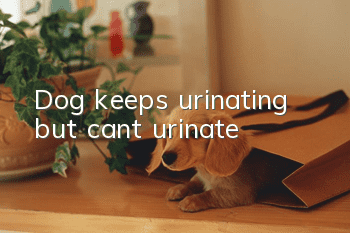What is patellar luxation in dogs? How should it be treated?

Patellar luxation is a common joint disease in small pets. Most medial patellar luxation is related to skeletal muscle abnormalities, such as medial shift of the quadriceps muscle group, remote external rotation of the femur, dysplasia of the femoral shaft, rotational instability of the knee joint, tibial deformation, etc. factors related. Bone deformation and muscle abnormalities prevent the patella from exerting pressure on the pulley, causing the pulley to be unable to achieve normal depth. According to the degree of skeletal cases of patellar luxation, it is divided into the following 4 levels:
Grade 1 patella is dislocated under the action of external force, but after the external force disappears, the patella returns to its normal position, and the joint flexion and extension are normal.
Grade 2 femoral torsional deformation is slight, and the patella is dislocated by artificial external force or when the knee joint is flexed, but it can only return to its normal position under the action of external force.
Grade 3: The patella is medially dislocated most of the time and can only be manually restored when the knee joint is extended. However, the patella will dislocate again after the external force disappears. At this level, the quadriceps muscle group is displaced medially, the supporting tissues of the knee joint are abnormal, and the femur and tibia are abnormal. Deformation.
Grade 4: The proximal tibial plateau has 80-90 degrees of rotation, the patellar dislocation cannot be reduced by external force, the trochlear groove becomes shallow or disappears, and the femoral tibia is usually more severe.
How to Treat Patellar Luxation
1. Seek medical treatment promptly and insist on taking medicine
Patellar disease has a great impact on dogs. Dog owners who do not have this disease must insist on prevention, and dogs with this disease must take medicine. Don't expect your dog to get better on its own. Once it becomes sick, it will develop quickly and dislocation will occur sooner or later. As long as the dog has this disease, it is not necessary to have surgery, it must take medicine, and it must be paid attention to.
2. Try not to make the dog excited and avoid jumping
Some dog owners are more careful and discover the disease earlier, and taking medicine can alleviate the condition. So for such dogs, we must consider taking care of the patella and not let the dog get worse. For example, the editor's friend's dog's patella is not very good. He often plays games with the dog that require jumping, which increases the burden on the dog's patella, resulting in a grade 2.5 disease.
3. Supplement more calcium to make your dog stronger
In daily life, we must pay attention to supplementing calcium for dogs. Calcium is of great significance to dogs. Dogs lacking calcium are prone to bone disease. Perhaps, you will definitely refute it after seeing this. Teddy’s patellar disease is mostly hereditary and has little to do with calcium deficiency. But the editor needs to remind you to pay attention:
1. If your dog is calcium deficient and it happens to carry the bone disease gene, it may develop earlier and the disease will worsen faster;
2. If your dog already has a patellar problem, recovery will be very slow.
4. Control your weight and not be too fat
It is recommended not to give your dog too many snacks or rice. Rice is rich in starch, which can make dogs gain weight. Allowing your dog to gain weight too quickly can put pressure on the patella, causing it to become misaligned. And the fatter and heavier the dog, the more severe the patellar dislocation will be. You should insist on feeding your dog food correctly so that your dog can grow up healthily.
5. Don’t perform surgery blindly
Surgery is not recommended for dogs. Nowadays, the cost of surgery for a single leg is several thousand, and there are certain surgical risks. There are also some dogs that are not ideal after surgery and do not recover well. Although surgery is the only way to cure the disease, when the condition is mild, careful care and medication can prevent the condition from getting worse. Conservative treatment is also a good option.
- How to get rid of mites on dogs?
- How to train a dog to be obedient? Dog training tips!
- Why does my Pomeranian keep barking at night?
- Dog has loss of appetite but is very active
- Dog gastritis symptoms and treatments
- Everything you need to know about raising a pet: Top 10 causes of pet death
- The dog’s hind legs keep kicking uncontrollably
- What’s wrong with low platelets in dogs?
- How soon should a dog be vaccinated?
- How to train a dog to understand its own name when it has just arrived at a new home?



